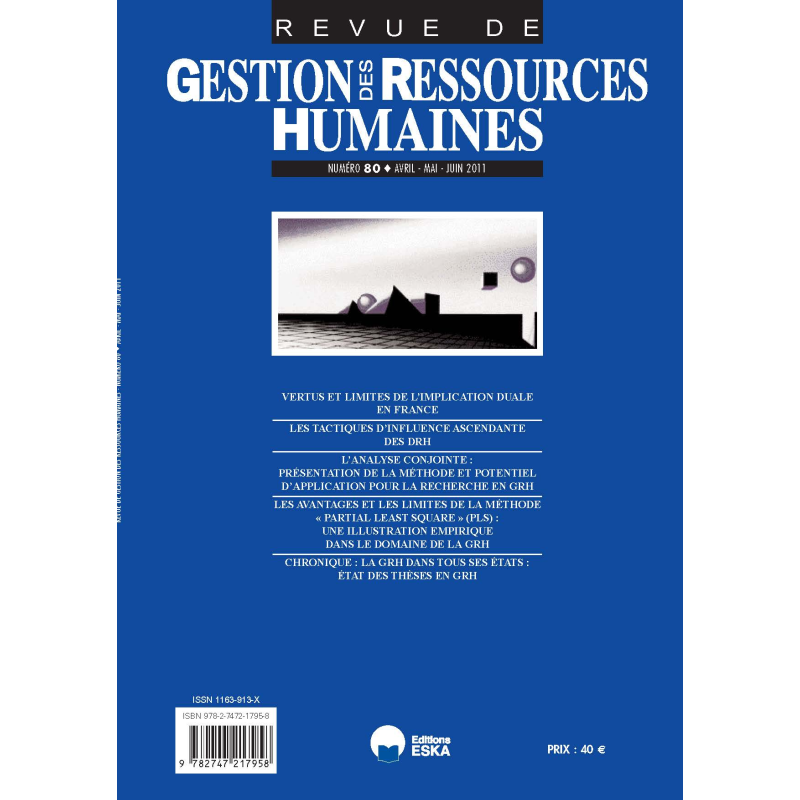


 Security policy
Security policy
(edit with the Customer Reassurance module)
 Delivery policy
Delivery policy
(edit with the Customer Reassurance module)
Conjoint analysis is a technique for handling situations in which a decision maker has to deal with options that simultaneously vary across several attributes. Until now it has remained underused in human resource management, although this methodology enables to study the preferences of employees and/or employers confronted with choices in the various areas of HRM. The article first presents the method of conjoint analysis. It then shows its interest and potential applications for researches in human resource management.